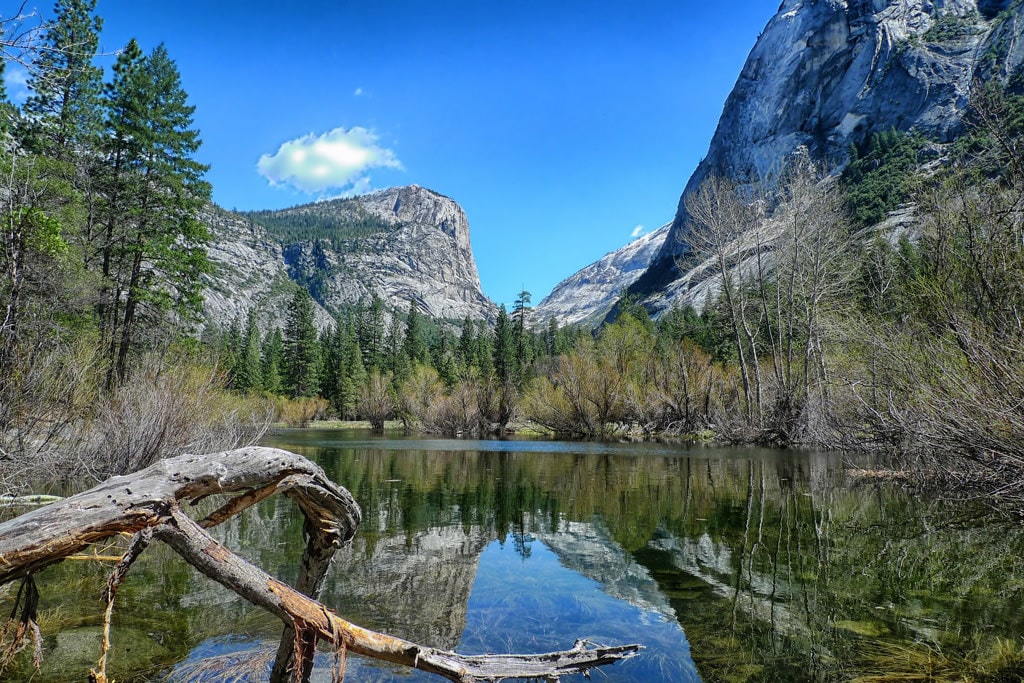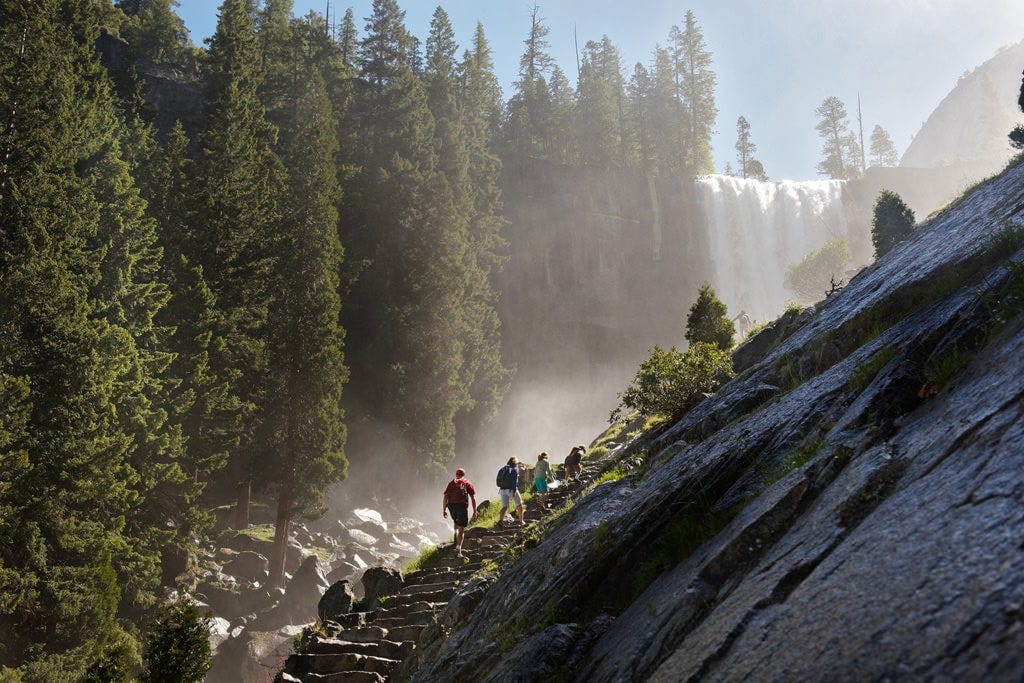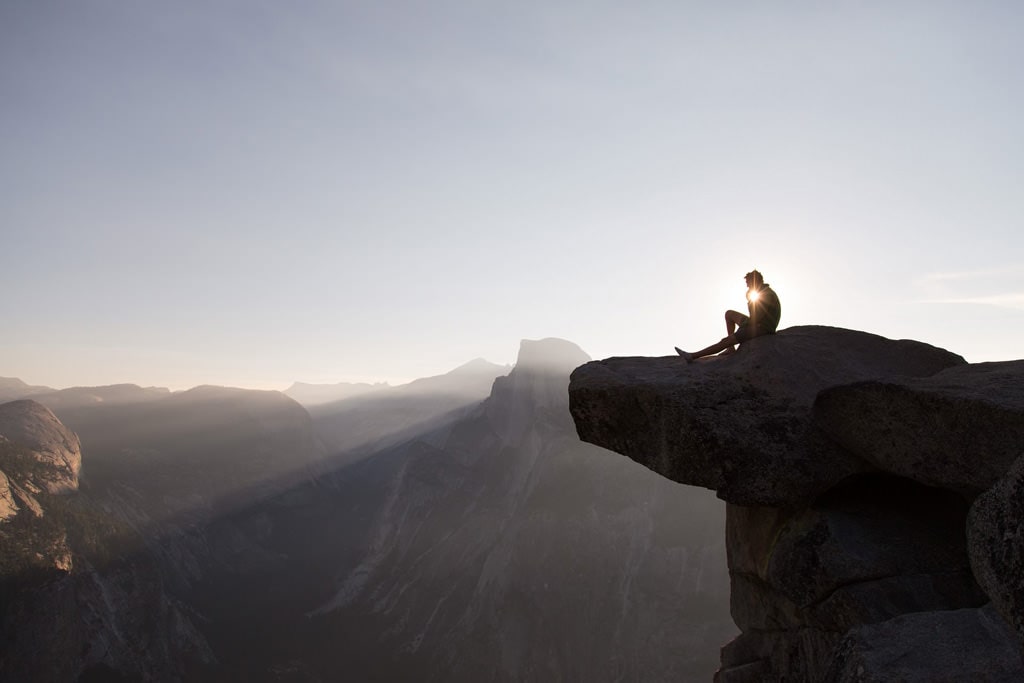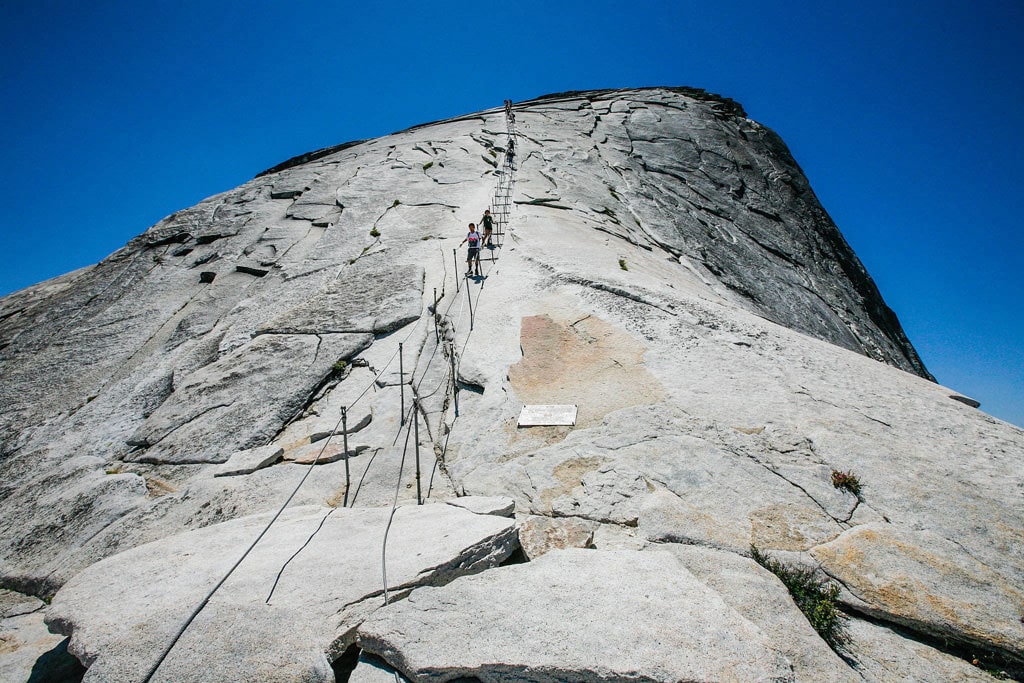Hiking in Yosemite National Park: An Insider’s Guide
With a backdrop of stunning landscapes—including soaring granite domes, alpine meadows, rushing waterfalls, and endless acres of backcountry wilderness—hiking in Yosemite National Park is nirvana for any outdoors enthusiast. A vast network of trails throughout the 704,000-acre park means there’s a dizzying array of options for hikes and hikers, from full day outings with thousands of feet of elevation gain to easy, flat strolls through Yosemite Valley.
As sublime as it is, hiking in Yosemite requires some pre-planning, especially in the high season between Memorial Day and Labor Day, when crowds in the park are at their peak. The good news, however, is that the masses often thin out a mile or so past the trailhead. In the high season, taking the free shuttle that loops throughout the valley and stops at various trailheads is a highly recommended way to get around (keep in mind that with a recent concessionaire switch at Yosemite, names of lodges and other landmarks have changed). Here’s what you need to know about some of the most popular hikes in Yosemite Valley.
Easy
Bridalveil Fall
Dropping 620 feet down, Bridalveil Falls is one of the first sights upon entering Yosemite Valley, so it’s a popular—and easy—way to get a quick fix of fresh air soon after paying your entrance fee. It’s just a half-mile, 20-minute hike to base of the waterfall, which flows year-round; prepare to get wet in the spring, when the falls are thundering. Parking can be tricky in the high season, so if the lot is full, continue up Southside Drive and park in one of two lots to access a trail that crosses Bridalveil Creek and offers different views of the falls as you walk to the base.
Mirror Lake


Several hike options at Mirror Lake offers scenic views of the pristine lake. - Pixabay
The name of this popular hike says it all: The lake magnificently reflects the surrounding cliffs in the spring, drawing tons of shutterbugs. It’s also a scenic spot to hit the trail.
For an easy out-and-back, stick to the mile-long paved service road that leads right to the lake. You can also avoid some of the crowds by hiking from the Majestic Yosemite Hotel (formerly the Ahwahnee) down to the Mirror Lake shuttle stop, a 2.8-mile route that’s ideal for families and less experienced hikers. Up for a longer excursion? The five-mile loop around the lake is a lovely option for a day hike, accessible from the end of the paved path. The loop follows Tenaya Creek beyond the lake and crosses two bridges after the Snow Creek Trail junction before returning past the lake on the south side of Tenaya Canyon.
Keep in mind that if you want to see the lake in its prime, visit during spring and early summer, when Tenaya Creek brims with fresh snowmelt. Visit in late summer, and you may just find it’s turned into “Mirror Meadow,” as it’s also known when the water dries up and grasses and sandy areas dominate the landscape.
Moderate
Mist Trail


The Mist Trail is one of the most memorable hikes in Yosemite, but prepare for slippery steps and crowds. - Yosemite Hospitality
Ascending steep granite stairs while getting drenched from the spray of a magnificent waterfall is a must-do while in Yosemite (but this is also one of the most popular hikes in the park, so don’t expect solitude). From the trailhead at Happy Isles, head uphill to the first viewing point at a footbridge about 0.8 miles in. A little further up, the Mist Trail splits with the John Muir Trail; this is where the real fun begins. Stay on the Mist Trail and navigate up about 600 granite steps while the waterfall spray creates an ethereal mist around you—footing is notoriously steep and slippery. Once at the top, delight in straight-down views of the 317-foot falls (obey all signs and don’t cross any railings—a few lives have been lost here).
If you’re up for more hiking and haven’t had your fill of waterfalls, continue up the Mist Trail another 1.5 miles of rocky, steep switchbacks until you reach Nevada Fall: a thundering, 594-foot monster that peaks in spring and early summer (head over the footbridge that crosses the Merced River for a closer look). After a short rest and requisite photos, you can head back down via the Mist Trail (not recommended for anyone with bad knees) or take the longer but gorgeous route along the John Muir Trail. It’s about four miles one way, about a mile and a half longer than the Mist Trail, but serves up spectacular vistas of Liberty Cap and a different view of Nevada Fall.


Yosemite National Park has iconic granite formations that set a backdrop for epic hikes. - Pixabay/Unsplash
The Sunrise High Sierra Camp is one of five camps in the high Sierra that provides backpackers with canvas tents and gourmet meals. - Yosemite Hospitality
Strenuous
Yosemite Falls Trail
An epic day hike that offers killer views of Yosemite Valley below, this trek ends up at a brag-worthy summit: at the top of North America’s tallest waterfall, which rises 2,425 feet from the valley floor. But prepare to work to get there: One of the park’s oldest historic trails (built from 1873 to 1877) is also one of its toughest, with switchbacks galore and a total of 2,700 feet of elevation gain. The trail is open year-round, but spring is an ideal time to tackle this one, as the falls will be roaring. Plan for about 6-8 hours to complete the hike, which is 7.2 miles round-trip.
Half Dome


Start planning far in advance to snag a permit to summit Half Dome, one of Yosemite’s most iconic landmarks. - Alex Proimo
First ascended in 1875 by outdoorsman George Anderson (who put pine pitch on his shoes to help him from slipping on the smooth granite), Half Dome has evolved to become the feather in the cap for many a Yosemite visitor. But this is no easy walk in the woods: Hiking to the top of Half Dome is crowded (you’ll be sharing the trail with hundreds of other hikers); hardcore (a 14-16 mile round-trip grind with 4,800 feet of elevation gain); and not for anyone with a fear of heights (you’ll reach the summit via cables on the sheer rock face nearly 5,000 feet above the valley).
Because the hike is so popular, obtaining a permit is your first order of business: Only 300 hikers are allowed onto Half Dome each day (225 day hikers and 75 backpackers). And the permitting process, which includes a lottery, is an adventure in itself; study up beforehand on how it works and have alternate dates in mind to maximize your chances of snagging one (the park service offers some excellent beta and tips on securing permits, including a graph that outlines the most popular days).
